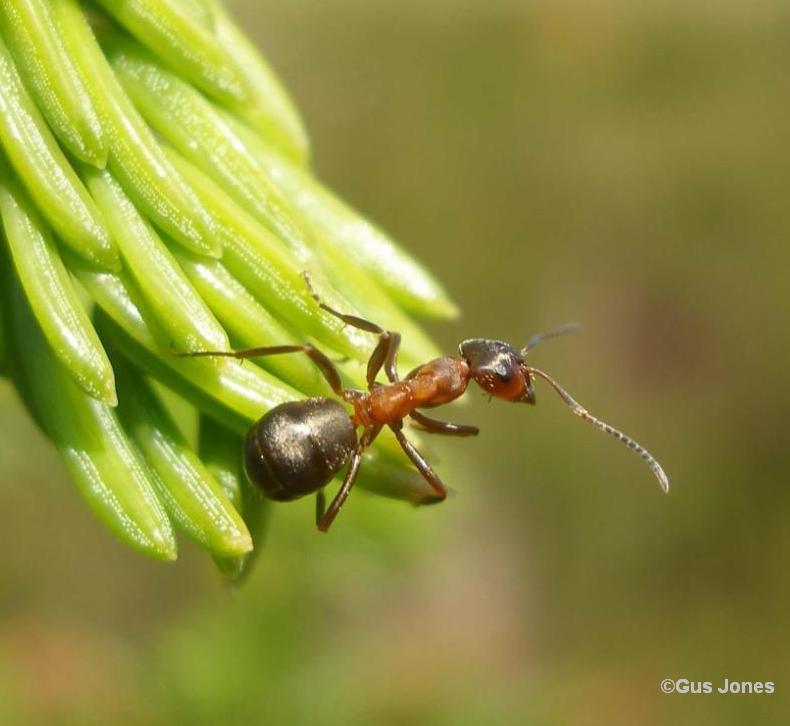Formica exsecta (narrow-headed ant)
Status
- European: Not threatened.
- UK: UKBAP Priority Species, GB Red List category 1 (endangered), Scottish Biodiversity List
Description
Not one of the “true” wood ants but a close relative in the subgenus Coptoformica.
The distinctive feature of this ant is the notch in the top of the head and somewhat “narrow” appearance of the head and smaller size compared to the wood ants.
Distribution
F. exsecta has a disjunct distribution in the UK. In England, the ant is now only found on Chudleigh Knighton Heath in Devon. The stronghold for the UK population remains the Abernethy-Glenmore-Rothiemurchus complex located within the Cairngorms National Park. Outlying populations exist at Braemar, Carrbridge and Black Wood of Rannoch.
Habitat
The narrow-headed ant had been recorded in a range of open habitats; in the UK these include grassland, dry heath, Caledonian pine woodland, birch woodland and scrub, and even on the fringes of bog. Nests are usually just beyond the woodland edge or within open clearings (such as power line rides) and are always away from canopy cover.
